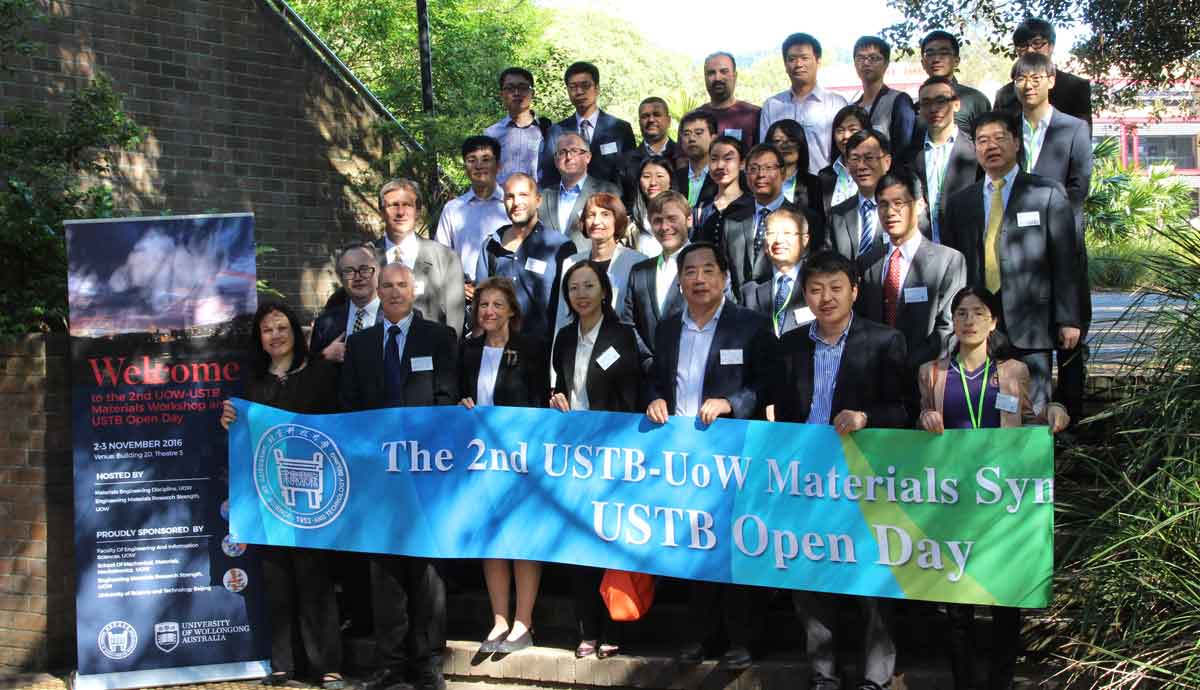November 15, 2016
International bond forged in steel
Joint workshop with top engineering university furthers steelmaking innovation.
Leading researchers from one of China’s top-ranked engineering universities joined their colleagues at the University of Wollongong (UOW) this week to progress innovations in steelmaking.
UOW hosted the University of Science and Technology Beijing (USTB) for the second joint workshop on ‘advanced materials and processing’.
USTB was formed in 1952 and is one of China’s leading universities in the fields of mining and metallurgy.
The collaboration between the two universities dates back more than a decade, focusing on research from metallurgy to broader engineering areas.
An MOU signed between the two universities and renewed in 2014 strengthened the research partnership and was extended to teaching collaborations, including articulation arrangements for students studying a Bachelor of Materials Engineering.
The workshop considered the quality of quality of steel products and reducing carbon emissions in the steelmaking process to help producers survive in a competitive global market.
Professor Ge Wang, USTB Vice President, said working with researches from abroad was essential and she encouraged frequent faculty visits and student exchanges
“A lot of the first level research should be carried out through collaboration. Each university has strengths in particular areas and the result is that one plus one is more than two,” she said.
“We share a common interest in iron and steelmaking. USTB is the biggest materials engineering faculty in the world but we’ve also taken ideas and techniques in steel rolling processes developed at UOW, an area in which it’s doing very well.
“These are valuable connections because China is facing almost the same sort of challenges in reducing waste and emissions and increasing efficiency in steelmaking.”
While technological advances in raw materials quality control, blast furnace operations and other areas have been developed, economic downturn and excess capacity is putting pressure on Chinese steelmakers to look for ways to remain competitive.
Professor Wang said reducing the capacity of production was the main task for Chinese steel industry, while at the same time paying attention to development of new products and the industry’s environmental footprint.
The workshop also extended into discussion around ‘smart’ materials, including bio-compatible metals for used in sensors and other medical devices.
The visitors toured UOW material engineering labs as well as visited the Bluescope steel works at Port Kembla.
Associate Professor Yue Zhao, Deputy Director of the Engineering Materials Research Strength (EMRS) said these workshops were the driving force in forming stronger relationships with top universities in the materials domain.
“By coming together we collectively raise standard of research and improve capability,” he said. “USTB has a strong relationship with industry, as does UOW, the ongoing research interaction brings innovations to industries in both countries develop ideas that can be implemented to assist industry.
“EMRS and the Materials Engineering Discipline have put great effort in supporting the event and facilitating the interactions between the two universities and we have a wonderful organising committee to make this happen.”
The organizing committee include Associate Professor Yue Zhao, Professor Ge Wang, Prof Madeleine du Toit ( Discipline Advisor of Materials Engineering, Prof Brian Monaghan (Director of EMRS), Prof Huijun Li (UOW), Prof Kanjun Guo (Director of USTB International Office), and Dr Vitor Sencadas (UOW).
The Workshop is jointly sponsored by the Engineering Materials Research Strength, School of Mechanical, Materials and Mechatronic Engineering, and Faculty of Engineering and Information Science of University of Wollongong, and the University of Science and Technology Beijing.
